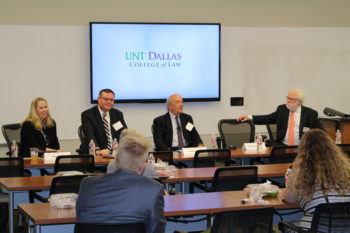Tony Mauro started covering the Supreme Court of the United States as a journalist 40 years ago when the third branch of government was a sleepy, nearly-forgotten stepchild of the executive and legislative arms. The justices were eight older white men and Thurgood Marshall, the first African-American justice. Remnants of the Warren Court were still everywhere.
The justices back then seldom gave interviews or made public speeches. Supreme Court appointments were maybe a question or two in presidential debates. In fact, more than a decade passed in the mid-1990s and 2000s with no personnel changes among the nine.
Much has changed in the past 13 years. Since 2005, six new justices office at 1 First Street NE, including two newbies during the past two years. The court now has three women. Both infamous “swing votes” – Sandra Day O’Connor and Anthony Kennedy – are gone.
Mauro has been there to chronicle it all as the Supreme Court’s second most senior correspondent.
“Tony has been covering the Supreme Court before the Supreme Court was cool,” Allyson Ho, a partner at Gibson Dunn in Dallas and Supreme Court advocate, told an audience of more than 60 Texas Lawbook readers Tuesday afternoon at the University of North Texas Dallas College of Law in downtown Dallas.
Mauro, a legendary journalist who has covered more than 1,000 Supreme Court arguments, headlined a 90-minute CLE program Tuesday afternoon featuring appellate court experts, including Ho and Dykema appellate law member Christopher Kratovil of Dallas.
“It has been an exciting time,” Mauro said. “It’s always good to be in Texas and Texas always gets its fair share of cases before the court.”
Kratovil and Ho agreed that the Supreme Court has witnessed a transformation in recent years.
“We are in a period of unprecedented change on a court that traditionally moves at a turtle’s pace,” said Ho, who has argued four cases before the nation’s highest court. “We were just starting to try to figure out Justice [Neil] Gorsuch last year when Justice Kavanaugh joined the court.”
Mauro, who authored a groundbreaking article in 1998 pointing out the pathetic lack of women and ethnic minority law clerks selected by Supreme Court justices, pointed out that the Supreme Court has its first Native American law clerk (thanks to Justice Gorsuch) and that a male lawyer was recently introduced for admittance to the Supreme Court Bar by his attorney-husband – also an historical first.
The panel delved into several significant subjects, including the Supreme Court’s declining caseload and the lack of women advocates arguing before the court.

When Mauro started covering the Supreme Court in 1979, the justices routinely tackled 160 cases a year. This year, it will be less than 70.
“Law clerks are looking for reasons for the justices to deny cert,” Ho said. “No clerk wants to be responsible for advocating that a case be taken only for the court to later determine that it was imprudently granted.”
The result, according to Kratovil, is “the Fifth Circuit Court of Appeals is, for all practical purposes, the court of last resort” for most litigants in Texas.
The “dwindling docket” also contributes to the fact that there are very few women, especially in private practice, who present oral arguments at the Supreme Court, Ho said.
“Most Supreme Court advocates come from the solicitor general’s office and only one woman has ever been SG and she [Elena Kagan] is on the Supreme Court,” she said. “I’m not optimistic it is going to change over night, but I am optimistic that it is going to change.”
Ho said she once had a client who told her he was looking for the “Norm factor” from Cheers, “where everybody knows your name.”
Kratovil and Mauro said that the Supreme Court is highly unlikely to address one of its toughest and most controversial issues – political gerrymandering – in the near future.
“If you are a fan of partisan gerrymandering, you can sleep better at night,” Kratovil said. “It would be a full-employment act for election lawyers if the Supreme Court were to strike down political gerrymandering.”
The panel also agreed that the Supreme Court is unlikely to change its view on various issues, including arbitration.
“Don’t bet against the Patriots in the Super Bowl and don’t bet against arbitration at the Supreme Court,” Kratovil said.
Mauro ended the program by mentioning that Justice Ruth Bader Ginsburg was seen in public this week and seemed to be doing fine.
“There are a lot of really brutal comments on social media and Twitter,” Mauro said. “Some people are saying Justice Ginsburg is already dead. Others are saying that President Trump needs to go visit her to see if she’s still alive. But Justice Ginsburg is a fighter.”
